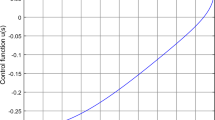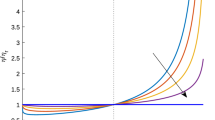Abstract.
To answer some issues raised about the concept of fractional differentiation and integration based on the exponential and Mittag-Leffler laws, we present, in this paper, fundamental differences between the power law, exponential decay, Mittag-Leffler law and their possible applications in nature. We demonstrate the failure of the semi-group principle in modeling real-world problems. We use natural phenomena to illustrate the importance of non-commutative and non-associative operators under which the Caputo-Fabrizio and Atangana-Baleanu fractional operators fall. We present statistical properties of generator for each fractional derivative, including Riemann-Liouville, Caputo-Fabrizio and Atangana-Baleanu ones. The Atangana-Baleanu and Caputo-Fabrizio fractional derivatives show crossover properties for the mean-square displacement, while the Riemann-Liouville is scale invariant. Their probability distributions are also a Gaussian to non-Gaussian crossover, with the difference that the Caputo Fabrizio kernel has a steady state between the transition. Only the Atangana-Baleanu kernel is a crossover for the waiting time distribution from stretched exponential to power law. A new criterion was suggested, namely the Atangana-Gómez fractional bracket, that helps describe the energy needed by a fractional derivative to characterize a 2-pletic manifold. Based on these properties, we classified fractional derivatives in three categories: weak, mild and strong fractional differential and integral operators. We presented some applications of fractional differential operators to describe real-world problems and we proved, with numerical simulations, that the Riemann-Liouville power-law derivative provides a description of real-world problems with much additional information, that can be seen as noise or error due to specific memory properties of its power-law kernel. The Caputo-Fabrizio derivative is less noisy while the Atangana-Baleanu fractional derivative provides an excellent description, due to its Mittag-Leffler memory, able to distinguish between dynamical systems taking place at different scales without steady state. The study suggests that the properties of associativity and commutativity or the semi-group principle are just irrelevant in fractional calculus. Properties of classical derivatives were established for the ordinary calculus with no memory effect and it is a failure of mathematical investigation to attempt to describe more complex natural phenomena using the same notions.
Similar content being viewed by others
References
J.R. Kantor, The Scientific Evolution of Psychology (Principia Press, Chicago, 1963)
P. Green, Alexander of Macedon (University of California Press Ltd., Oxford, 1991)
R. Sorabji (Editor), Aristotle Transformed (Bloomsburg Academic, London, 1990)
J. Filonik, Athenian Impiety Trials: A Reappraisal (Dike, 2013)
A.G. Kurosh, Mat. Sbornik. 20, 237 (1947)
D. Eisenhardt, Learn Mem. 21, 534 (2014)
I. Yaglom, Complex Numbers in Geometry (Academic Press, N.Y., 1968) pp. 195-219, translated by E. Primrose from 1963 Russian original, appendix: Non-Euclidean geometries in the plane and complex numbers
J. Briggs, Fractals: The Patterns of Chaos (Thames and Hudson, London, 1992)
T. Vicsek, Fractal Growth Phenomena (World Scientific, Singapore/New Jersey, 1992)
H. Takayasu, Fractals in the Physical Sciences (Manchester University Press, Manchester, 1990)
R.D. Knight, J. Geom. 83, 137 (2005)
W. Blaschke, Differentialgeometrie der Kreise und Kugeln, in Vorlesungen über Differentialgeometrie, Grundlehren der Mathematischen Wissenschaften (Springer, Berlin, 1929)
M.D. Ortigueira, J.A.T. Machado, J. Comput. Phys. 293, 4 (2015)
V.E. Tarasov, Nonlinear Sci. Numer. Simul. 18, 2945 (2013)
G.B. Folland, Advanced Calculus (Prentice Hall, 2002)
M. Caputo, Geophys. J. Int. 13, 529 (1967)
A. Atangana, B. Dumitru, Therm. Sci. 20, 763 (2016)
M. Caputo, M. Fabrizio, Progr. Fract. Differ. Appl. 2, 1 (2016)
C.G. Galizia, S.L. McIlwrath, R. Menzel, Cell Tissue Res. 295, 383 (1999)
R.D. Schafer, An Introduction to Nonassociative Algebras, Vol. 22 (Academic Press, 1966)
S. Okubo, Introduction to Octonion and Other Non-associative Algebras in Physics (Cambridge University Press, 1995)
E.T. Whittaker, A Treatise on the Analytical Dynamics of Particles and Rigid Bodies, with an Introduction to the Problem of Three Bodies, 4th ed. (Dover Publications, New York, 1937)
R. Broucke, Astrophys. Space Sci. 72, 33 (1980)
A. Biswas, V. Shapiro, Graph. Models 66, 133 (2004)
F. Cantrijn, A. Ibort, M. De-Leon, J. Aust. Math. Soc. A 66, 303 (1999)
J. Baez, A. Hoffnung, C. Rogers, Commun. Math. Phys. 293, 701 (2010)
K.C. Louden, Compiler Construction: Principles and Practice (1997)
M. Pitkänen, Prespacetime J. 7, 66 (2016)
H. Couclelis, N. Gale, Geogr. Ann. Ser. B Human Geogr. 68, 1 (1986)
M. Chaichian, P. Presnajder, A. Tureanu, Phys. Rev. Lett. 94, 151602 (2005)
S. Doplicher, K. Fredenhagen, J.E. Roberts, Commun. Math. Phys. 172, 187 (1995)
M.R. Douglas, N.A. Nekrasov, Rev. Mod. Phys. 73, 977 (2001)
V. Moretti, Rev. Math. Phys. 15, 1171 (2003)
W. Heisenberg, Z. Phys. 43, 172 (1927)
L.A. Rozema, A. Darabi, D.H. Mahler, A. Hayat, Y. Soudagar, A.M. Steinberg, Phys. Rev. Lett. 109, 100404 (2012)
D.J. Gross, F. Wilczek, Phys. Rev. Lett. 30, 1343 (1973)
R. Gorenflo, J. Loutchko, Y. Luchko, Fract. Calc. Appl. Anal. 5, 491 (2002)
R.N. Pillai, Ann. Inst. Stat. Math. 42, 157 (1990)
C.S. Kumar, B.U. Nair, J. Stat. Appl. 6, 23 (2011)
C.S. Kumar, B.U. Nair, OPSEARCH 52, 86 (2015)
A.M. Mathai, P. Moschopoulos, J. Stat. Appl. Prob. 1, 15 (2012)
J. Hristov, Derivatives with non-singular kernels from the Caputo-Fabrizio definition and beyond: Appraising analysis with emphasis on diffusion models, in Frontiers in Fractional Calculus (Bentham Science Publishers, 2017) pp. 235--295
J. Hristov, Electrical Circuits of Non-integer Order: Introduction to an Emerging Interdisciplinary Area with Examples, in Analysis and Simulation of Electrical and Computer Systems (Springer, 2018) pp. 251--273
A. Atangana, I. Koca, Chaos, Solitons Fractals 89, 447 (2016)
J. Hristov, Therm. Sci. 21, 827 (2016)
B.S.T. Alkahtani, Chaos, Solitons Fractals 89, 547 (2016)
V.F. Morales-Delgado, J.F. Gómez-Aguilar, M.A. Taneco-Hernández, Eur. Phys. J. Plus 132, 527 (2017)
J.F. Gómez-Aguilar, J. Math. Sociol. 41, 172 (2017)
J.F. Gómez-Aguilar, Chaos, Solitons Fractals 95, 179 (2017)
A.A. Tateishi, H.V. Ribeiro, E.K. Lenzi, Front. Phys. 5, 52 (2017)
I. Podlubny, Fractional differential equations: an introduction to fractional derivatives, fractional differential equations, to methods of their solution and some of their applications (Academic Press, New York, 1998)
L. Changpin, T. Chunxing, Comput. Math. Appl. 58, 1573 (2009)
K. Diethelm, N.J. Ford, A.D. Freed, Numer. Algorithms 36, 31 (2004)
M. Caputo, M. Fabricio, Progr. Fract. Differ. Appl. 1, 73 (2015)
A. Atangana, J.J. Nieto, Adv. Mech. Eng. 7, 1 (2015)
J.F. Gómez-Aguilar, Numer. Methods Part. Differ. Equ. (2017) https://doi.org/10.1002/num.22219
A.M.A. El-Sayed, A.E.M. El-Mesiry, H.A.A. El-Saka, Appl. Math. Lett. 20, 817 (2007)
J.G. Lu, Chaos, Solitons Fractals 26, 1125 (2005)
D.R. Willé, C.T. Baker, Appl. Numer. Math. 9, 223 (1992)
V. Daftardar-Gejji, Y. Sukale, S. Bhalekar, Fract. Calc. Appl. Anal. 18, 400 (2015)
A. Atangana, J.F. Gómez-Aguilar, Numer. Methods Part. Differ. Equ. (2017) https://doi.org/10.1002/num.22195
A. Atangana, E.F. Doungmo-Goufo, Therm. Sci. 19, 231 (2015)
Author information
Authors and Affiliations
Corresponding author
Rights and permissions
About this article
Cite this article
Atangana, A., Gómez-Aguilar, J.F. Decolonisation of fractional calculus rules: Breaking commutativity and associativity to capture more natural phenomena. Eur. Phys. J. Plus 133, 166 (2018). https://doi.org/10.1140/epjp/i2018-12021-3
Received:
Accepted:
Published:
DOI: https://doi.org/10.1140/epjp/i2018-12021-3




